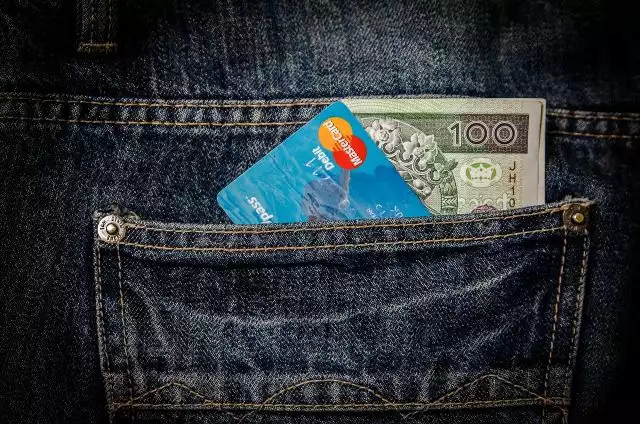
The origins of the 1958 Alifabolaget Pelé trace to 1902 when Swedish business owner and business person Anders Lindahl (1860-1932) created the Lindahl Factories Firm (” AB A. Lindahl’s Fabriker”) in Stockholm. Lindahl was a master of advertising and created exciting campaigns to persuade middle-class Swedes of the demand for the company’s numerous, suspicious mixtures, consisting of wellness salts, salves, ointments, cold-fighting lozenges, nutritional supplements, cleaning agents, and confectionaries. [2] He introduced his biggest industrial success, the carbonated drink Pommac, at a 1923 globe fair (Jubilee Exposition) in Gothenburg, Sweden. Lindahl marketed Pommac as “the lovely drink of the 25 fruits,” and “the taste of summer.” It continues to be prominent in Sweden today.
Erik and Frithiof Lindahl proceeded the family members service after the patriarch’s death in 1932, and creative advertising and marketing remained the Lindahl household’s calling card. In 1936, the company generated a 275-card collection honoring the stars of the 1936 Berlin Olympics, consisting of 4 different cards of track and field legend Jesse Owens. Identified as “Alfa Olymp-Skylt” in the PSA computer registry, the little (1″ x 1.75″), black and white cards were included independently in bundles of Alfa’s caramel candy (” Alfakolan” or “Alfa Bobbykola”).
Among soccer cards, the 1958 Alifabolaget Pelé resides at the top of the pyramid– a famous card from the globe’s most preferred sporting activity. Unlike the 1952 Topps Mickey Mantle or 1986 Fleer Michael Jordan, little is understood about the bite-size (1.25″ x 1.85″) piece of cardboard that offered for $1.3 million in 2022. [1] The Alifabolaget Pelé has an abundant story not previously informed.
Card # 635 portrays young Pelé in the blue Brazil jacket worn in the final video game. Heaven shirts were quickly acquired and spots were stitched on just days before the game because both finalists (Sweden and Brazil) used yellow packages. The rear of the card, in Swedish, pithily reads, “PELÉ, left winger, the WC event’s youngest gamer at the age of 17. Probably not so unusual that he wept when the WC last was won against Sweden. Has obtained numerous expert deals but remains in Brazil for the time being.”
From 1949 throughl 1961, Alifabolaget generated 1702 various sports cards. From 1949 through 1952, the cards were white and black. A lot of the cards were images of professional gamers from the major Swedish soccer clubs. Alifa introduced color photos in 1953. The business included hockey cards to the collection in 1955, and created an unique 18-card run of well known Swedish boxer Ingemar Johanson in 1959. Alifa also generated a collection of Olympic cards in the mid-1950s in celebration of the 1952 Helsinki Olympic Games.
While the lemon-flavored Alfa lozenges had restricted allure on their very own, the Alifabolaget cards of the 1950s were preferred among Swedish young people at the time and proceed to have a following amongst Swedish enthusiasts. A 1977 flood of Alifa’s headquarters in Angelholm, Sweden apparently ruined the firm’s stock of old cards. The Swedish publication Alfa-Boken by Bror Haars offers a photographic background of all 1702 Alifa cards.
The Alifabolaget cards of the 1950s have much more in common with the tobacco-era cards of the very early 20th century than the soccer stamps/stickers/albums prevalent at the time in Europe and Latin America. The Alifabolaget Pelé card is # 635. Enthusiasts have actually identified at the very least 19 various Pelé stamps/playing cards/hand-cut cards from the 1957-58 time period, when Pelé was just arising on the world phase– not to point out the thousands of different Pelé cards produced because that time.
Gathering Pelé cards is a complicated, and sometimes overwhelming, task. Pelé was the first really worldwide sports mega-star. Collection agencies have recognized at the very least 19 different Pelé stamps/playing cards/hand-cut cards from the 1957-58 time period, when Pelé was just arising on the globe phase– and also the hundreds of different Pelé cards produced since that time.
Born Edson Arantes do Nascimento, Pelé was the soccer superstar versus whom all present and future soccer stars will certainly be measured. Chosen by the International Olympic Board as the greatest athlete of the 20th century, Pelé’s name is identified with the sporting activity he reinvented.
Amongst soccer cards, the 1958 Alifabolaget Pelé resides at the top of the pyramid– a legendary card from the world’s most popular sport. Alifa relaunched sporting activities cards in Sweden with the incorporation of soccer cards in plans of its throat lozenges (” Alfa-pastill”).
Around the exact same period, from 1936-1938, Alifa generated a collection of 150 Disney cards that it additionally packaged with its sweet. In 1941, Alifa created a run of 200 film stars qualified “Alfa Filmkolaskylt” that consisted of John Wayne, Ginger Rogers, Fred Astaire, Lucille Sphere and others. Shortly after that, Alifa’s card production discontinued as World War II increased and paper remained in short supply. Alifa relaunched sporting activities cards in Sweden with the incorporation of soccer cards in packages of its throat lozenges (” Alfa-pastill”).
The Alifabolaget’s vaulted standing is well-deserved. It was issued by the Word Cup host country’s dominant card supplier. It was released in a systematic and cohesive collection of World Mug cards the featured the private players for the top completing groups. Rather than a one-off manufacturing, the Alifa Company was a consumer brand that delighted in 12 years of consecutive sporting activities card launches. The cards were sealed in plans and dispersed at retail electrical outlets. The circulation format was similar to the tobacco/gum design that vintage card collectors recognize, understand, and value.
In 1958, in ceremony of Sweden’s hosting of the World Mug, the Alifa Firm created a series of 35 international football cards. The collection contains 31 players and 4 group cards from the four Globe Mug finalists: Sweden, West Germany, Brazil, and France. The cards are numbered 615 via 650. The Alifabolaget Pelé card is # 635. Since May 20, 2024, 167 duplicates have been determined and graded. The World Cup launch also includes a prominent Brazil group card.
The Alifabolaget cards of the 1950s have far more alike with the tobacco-era cards of the very early 20th century than the soccer stamps/stickers/albums common at the time in Europe and Latin America. The cards included 8-10 lines of text in black, eco-friendly, blue, or red message. One card was included in each box of its “yummy, revitalizing” Afra-pastill lozenges.
After scoring 5 objectives in the semifinal and final of the 1958 World Mug at age 17, Pelé was proclaimed a national treasure by the Brazilian government to ensure he would certainly remain in Brazil. His mere existence can stop battles. In 1967, a 48-hour ceasefire was observed throughout the Nigerian Civil Battle so that Nigerians can enjoy his electrifying play on their indigenous soil. His achievements and records on the field are as well lengthy to list. His infectious smile and interest for the game made him a cultural icon.
1 Alifabolaget Pelé card2 cards
« Golden Years with Senior Hobby Classes | Wizhob BlogTop 5 hobbies for Senior Citizen | Wizhob Blog »
